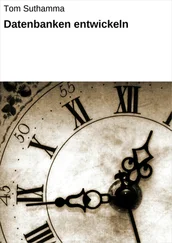tom suthamma
Hitler and his extermination camps
inside the KZs
Dieses ebook wurde erstellt bei

Inhaltsverzeichnis
Titel tom suthamma Hitler and his extermination camps inside the KZs Dieses ebook wurde erstellt bei
How it all started
The triumphal march of the Nazis
Organization of the Nazis
The war starts
genocide
KZs - extermination camp
Impressum neobooks
Hitler and his extermination camps
Anti-Semitism has a centuries-old, cross-border tradition. But back to the roots. Jesus was a Jew and a revolutionary against the Jewish establishment. Although the belief in a god was firmly anchored in Judaism, at the same time the people of Moses lived in anticipation of the Messiah, the Redeemer, especially from Roman slavery. A warlord and liberator were expected to shake off the Roman yoke. Then a man came on a donkey into Jerusalem and Jesus came on the scene, a meek preacher who spoke of mercy, forgiveness, charity and the kingdom of God on earth without naming a specific time. At the same time, the otherwise meek Jesus chased the moneylenders out of the temple, a clear affront to the Jewish high priests. They reacted according to the times, a self-proclaimed Messiah who, contrary to the prevailing expectation of salvation, only promised a distant kingdom of God and also spread revolutionary ideas, had to be branded as a heretic. Jesus was accused, sentenced to death by the governor of Rome, Pontius Pilate (as reported, only reluctantly) and the judgment was carried out by the Romans, as is known and also in the usual way in time. So much for history, mixed with facts and legends, from which derives the eternal reproach: "The Jews murdered Jesus Christ". The death of Jesus, his traditional resurrection and ascension are the hour of birth of Christianity, however in the following years it only spread to the Jewish community and only under Paul’s missionary work for all people, whether pagan or not circumcised, made accessible. Jews have been living, driven out of their homes, in the countries and regions of Central Europe for more than 1700 years. Despite numerous persecutions that reached their first peak in Central Europe at the time of the plague in the Middle Ages, Jewish communities survived. The Jews were blamed and caused the plague by well poisoning, among many other grievances, even natural disasters, under often obscure arguments. Numerous Jews emigrated to Eastern Europe because of the ongoing harassment in search of new habitats. Access to the guilds, trade and the upper middle class was denied to the Jews, and money lending remained a niche, a trade that was often frequented but at the same time despised. Only the tolerance patent of 1781 under Emperor Joseph II guaranteed the previously discriminated minorities, as well as the Jews, the right to practice their religion freely. There have been pogroms at all times, outbreaks of spontaneous persecution of Jews, both in Eastern and Central Europe. The Jewish communities were naturally characterized, because of their painful history, always by strong inner ties, high educational standards and tireless diligence. It is therefore not surprising that a disproportionate number of outstanding, world-famous scientists, Nobel laureates, artists, architects, doctors and also extremely successful bankers came out of these circles. The latter is a fact that Nazi propaganda against Jews provided ample material ("The people are getting thinner, the Jews are getting fatter, Heil Hitler, our savior ”) and later to lead to disastrous consequences and into the darkest chapter of German history. The Habsburgs from Austria have been the head of the German Confederation of Princes for centuries as emperor of the "St. Roman Empire of the German Nation ”. This role was contested by the Habsburgs in the confrontation with Prussia and sealed by the defeat in the war against the Prussians in 1866. Austria had to develop to the east, in 1867 the double monarchy Austria-Hungary, also called the Danube monarchy, was founded. The country's territory recently included the territories of today's states Austria, Hungary, Czech Republic, Slovakia, Slovenia, Croatia, Bosnia and Herzegovina as well as parts of today's Romania (Transylvania), Banat, Eastern part of Sathmar, South Mararmosh, (South Bukovina), Montenegro (coastal communities), Poland (Western Galicia), Ukraine (Eastern Galicia, Northern Marmarosh and Northern Bukovina), Italy (Trentino-South Tyrol and parts of Friuli-Venezia Giulia) and Serbia ( Vojvodina). It was the second largest country in Europe after Russia. There were always disputes with the small neighboring state, the Kingdom of Serbia, such as the so-called “pig war” in 1908, during which the monarchy blocked all exports and the transit of agricultural products, placing Serbia in a highly precarious economic situation. Serbia has traditionally always been supported by Russia, also as a pledge against Austria. The Austro-Hungarian Empire of the Danube under the rule of the Habsburgs was a multinational state,
Конец ознакомительного фрагмента.
Текст предоставлен ООО «ЛитРес».
Прочитайте эту книгу целиком, купив полную легальную версию на ЛитРес.
Безопасно оплатить книгу можно банковской картой Visa, MasterCard, Maestro, со счета мобильного телефона, с платежного терминала, в салоне МТС или Связной, через PayPal, WebMoney, Яндекс.Деньги, QIWI Кошелек, бонусными картами или другим удобным Вам способом.













